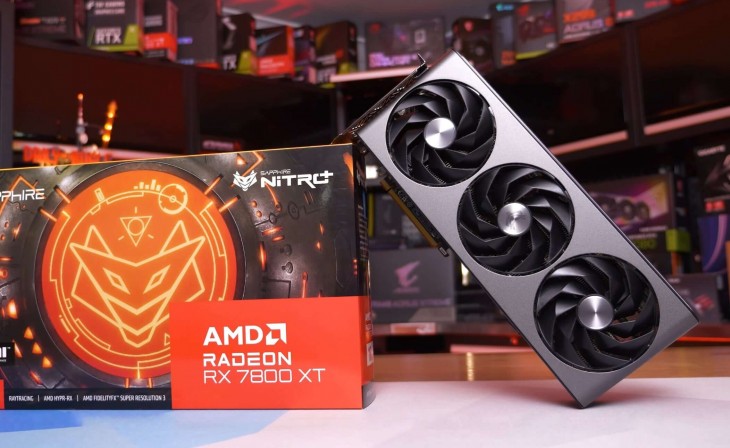Radeon's Legacy
Radeon RX 480 8GB: The Midrange Revolution
The Emergence of RX 480
In the mid-2010s, amidst financial challenges, AMD introduced the Radeon RX 480. This midrange GPU, based on the Polaris architecture, was designed for cost-effectiveness, offering a balance of price, performance, and power. Its "Radeon Rebellion" marketing campaign targeted gamers seeking high-end graphics without the high cost.
Also check Nvidia GeForce RTX 4090 Laptop GPU Review: A New Era in Mobile Gaming
Performance and Legacy
The RX 480 was initially comparable to its contemporaries like the Radeon R9 and GeForce GTX. Over time, however, it improved in performance through driver updates. Despite its shortcomings, like power draw issues, the RX 480 is remembered for its value and longevity in the market.
Radeon RX 6800 XT: The Flagship Challenger
AMD's Struggle with Flagships
Historically, AMD faced challenges in producing competitive flagship GPUs. However, the Radeon RX 6800 XT marked a significant return to this segment. Built on the RDNA architecture and featuring high clock speeds, ample memory, and an efficient Infinity Cache, it was AMD's answer to Nvidia's dominance.
Competing with Nvidia
The RX 6800 XT contended directly with Nvidia’s RTX, offering comparable performance and efficiency at a lower price. Though it lagged in ray tracing and upscaling technologies, its value for money made it a significant player in the market.
Radeon's Momentary Market Share Success
The Early 2010s Context
In the early 2010s, AMD nearly surpassed Nvidia in GPU market share, thanks to Nvidia's struggles with its Fermi-based series. However, as the decade progressed, Nvidia regained its footing, posing a challenge for AMD, which was also facing financial difficulties.
Advancements and Setbacks
AMD's strategy of adopting cutting-edge nodes quicker than Nvidia had its advantages. The introduction of the Graphics Core Next (GCN) architecture in the HD series, particularly the HD 7970, marked significant performance improvements over previous models. Despite this, Nvidia's GTX outperformed the HD 7970 in key areas, reasserting Nvidia's market dominance.
Radeon HD 5870: The Game Changer
Introduction of the HD 5870
In 2009, the Radeon HD 5870 was introduced, representing a major leap in GPU technology. It was the first GPU to support DirectX 11, offering substantial performance improvements and features that catered to both gamers and professionals.
Impact and Legacy
The HD 5870 set new standards in graphical performance, with its innovative features becoming a benchmark for future GPUs. Its combination of performance, price, and power efficiency made it a favorite among enthusiasts and is still regarded as one of Radeon's most significant releases.
Radeon R9 290X: The Defining Moment
Launch and Impact
The Radeon R9 290X, released in 2013, is often considered the pinnacle of Radeon's GPU offerings. It was a high-performance card that rivaled Nvidia's offerings at a lower price, reshaping perceptions of what AMD could achieve in the high-end market.
Legacy and Influence
The R9 290X's impact went beyond its immediate performance. It influenced future Radeon designs and helped AMD gain a stronger foothold in the competitive GPU market. Its blend of performance, price, and innovation makes it a standout in Radeon's history.
Conclusion: Radeon's Continuing Journey
Over the past years, Radeon GPUs have experienced highs and lows, consistently challenging the market leader Nvidia. Despite financial and technological challenges, Radeon has produced GPUs that are not only competitive but also innovative, shaping the graphics card market in significant ways. As the industry continues to evolve, Radeon's legacy of resilience and innovation remains a testament to its contributions to graphics technology.




